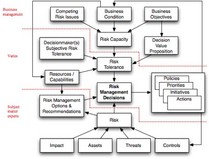 Has Freeman Dyson become an evolution denier?
Has Freeman Dyson become an evolution denier?
Whatever Carl Woese writes, even in a speculative vein, needs to be taken seriously. In his "New Biology" article, he is postulating a golden age of pre-Darwinian life, when horizontal gene transfer was universal and separate species did not yet exist. Life was then a community of cells of various kinds, sharing their genetic information so that clever chemical tricks and catalytic processes invented by one creature could be inherited by all of them. Evolution was a communal affair, the whole community advancing in metabolic and reproductive efficiency as the genes of the most efficient cells were shared. Evolution could be rapid, as new chemical devices could be evolved simultaneously by cells of different kinds working in parallel and then reassembled in a single cell by horizontal gene transfer.
But then, one evil day, a cell resembling a primitive bacterium happened to find itself one jump ahead of its neighbors in efficiency. That cell, anticipating Bill Gates by three billion years, separated itself from the community and refused to share. Its offspring became the first species of bacteria—and the first species of any kind—reserving their intellectual property for their own private use. With their superior efficiency, the bacteria continued to prosper and to evolve separately, while the rest of the community continued its communal life. Some millions of years later, another cell separated itself from the community and became the ancestor of the archea. Some time after that, a third cell separated itself and became the ancestor of the eukaryotes. And so it went on, until nothing was left of the community and all life was divided into species. The Darwinian interlude had begun.
— Our Biotech Future, By Freeman Dyson, New York Review of Books, Volume 54, Number 12 · July 19, 2007
Has he sold out for an admittedly very fetching simile?
Continue reading





